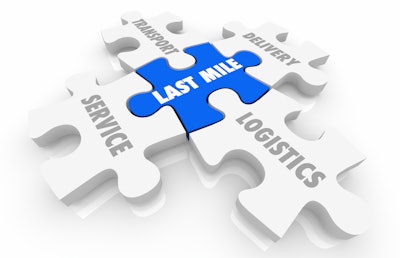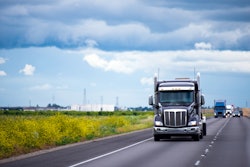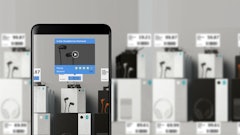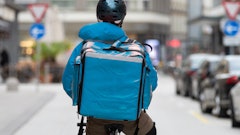
In 2020, grocery retailers braved the challenges of the early days of the pandemic by going omnichannel, which in itself had some major hurdles. In some cities, entire blocks were cordoned off as “red zones” that could not be accessed by drivers to make grocery deliveries, and route planning solutions had to ensure they bypassed these zones while still being on time.
The expectation was that people would flock back to stores once the pandemic was behind us. In 2022 however, the North American grocery sector is at a curious standpoint. According to research by McKinsey, there was a 50% growth in consumer preference for e-commerce home deliveries this year, and this trend is expected to rise. This raises the pressure on grocery retailers, who now have to deal with high levels of inflation and labor shortages, apart from the already steep costs of last-mile fulfillment. Scaling capacity to meet additional demand during sales and holiday seasons becomes even tougher in this context. There has also been greater awareness among consumers for pursuing sustainability options. The same McKinsey report noted how grocery retail CEOs believe that in 2022, more consumers will opt for more sustainable purchasing choices.
So, how can grocery businesses get past these challenges to keep growing? One way is to adopt efficient last-mile technology solutions. These solutions are highly sophisticated and can provide tangible business growth across the entire fulfillment cycle, including:
Delivering quality customer service. Consumers often bank on the convenience of e-commerce deliveries for urgent tasks such as preparing their next meal or finishing some long-pending chores around the house. Transparency over the status of deliveries signals to the consumers that they matter. It reassures them that their purchases are on their way, and even delights them when they reach their final destination ahead of time. Tracking pages provide this sort of transparency to consumers as they provide turn-by-turn updates on their orders. They also allow consumers to pass on instructions (such as contactless delivery, do not ring the doorbell), seamlessly communicate with drivers, contact businesses for updates over unavoidable delays, and provide feedback to better improve the business.
Digitization to scale up last-mile delivery efficiency. The McKinsey report shared that an estimated 54% of retail functions can be automated for better efficiencies, and it is estimated that around 35% of this potential is likely to be captured by 2030.
Digitization through order management solutions can automate important processes like order capture and allocation to drivers. They can provide complete visibility on all orders through the entire fulfillment cycle, and even reschedule those that were missed in the first attempt.
Route planning is another repetitive but crucial function that can provide benefits at scale when optimized. To scale up delivery capacities during peak seasons in a short time frame, carrier management solutions enable the hiring of third-party logistics providers based on the competitiveness of delivery charges.
Empowering workers to do more. Route planning solutions take into account hundreds of real-life constraints to create optimal routes for drivers. The optimization of these routes means that drivers require fewer empty miles, which saves on time and fuel, reduces costs, and allows them to take on more deliveries in the same shift. These solutions can reroute drivers in real-time in case drivers encounter unforeseen obstacles like unexpected road closures, sudden bottlenecks, bad weather and others.
Prior to these solutions, on-ground personnel had no visibility and would need to connect with drivers individually for an update. Control Tower solutions allow supervisors to be aware of the progress of all drivers in their fleet in real-time. Automated alerts can notify them of any possible setbacks where they can then step in, if necessary to prevent delays. Such solutions also offer a seamless way to communicate with drivers while still allowing them to keep an eye on the rest of the fleet.
Bring greater sustainability to operations. Route planning solutions are often calibrated to find the optimal route that covers the least distance, which means reduced greenhouse gas emissions (GHGs) from fuel consumption. Over time, the benefits add up, and businesses can keep track of the volume of GHGs sequestered thanks to drivers following optimized routes. While many businesses are leveraging these solutions to offer quick deliveries within the hour, some are presenting consumers with alternative delivery time frames that might be longer, but would mean lower GHGs if clubbed with other orders in the same locality.
Uncovering hidden efficiencies. Fleets produce large volumes of data as they carry out their deliveries. When analyzed by powerful analytics engines, they give out insights into what can be improved and where the next growth opportunities lay. These insights can be readily gathered from intuitive and customizable dashboards and can be used to further improve last-mile delivery capabilities.
When it comes to online grocery fulfillment, the post-purchase consumer experience is as important as quality product selection and competitive prices. If done right, it can mean greater consumer retention. This is all the more important because consumers’ basket sizes are increasing, and the frequency of purchases are decreasing.
By enabling efficiency at scale, bringing sustainability to operations, and powering a consumer-centric approach, last-mile technology solutions can empower this crucial touchpoint in contributing to delightful consumer experiences.




















